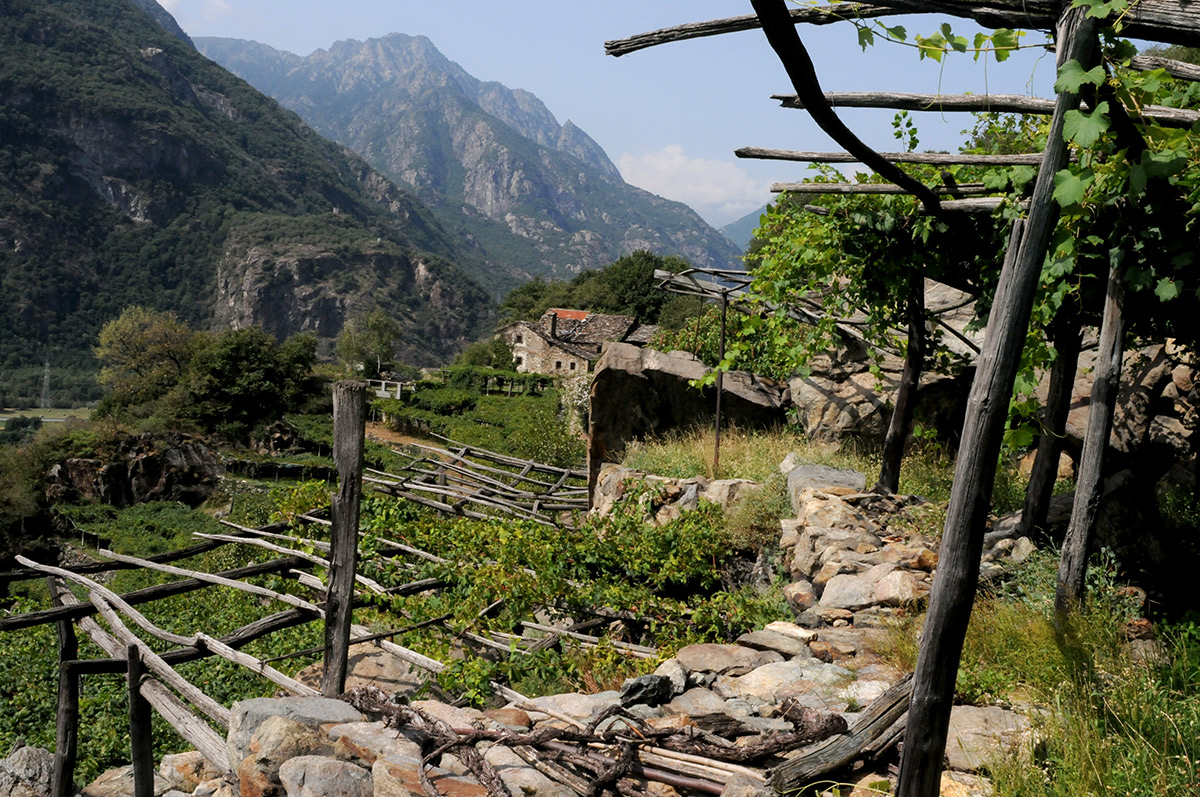
A miracolous coexistance
December 2017

A gorgeous combination of natural and artificial, Carema's Vineyards is a living testimony of
Carema is a symbiosis masterpiece between man and nature. A perfect synthesis between architecture and landscape, which miraculously sublimates in a unique combination of a visually stunning organic architecture and of the tasteful sip of refined red Nebbiolo in your palate. A perfect integration between life, work, preserving your vicinity and conserving its knowledge (that of taking care of a vineyard to make a miraculous wine).
Located on the border between Piedmont and Valle d'Aosta, the Carema village climbs up the Alps along a steep and sunny slope, up to 600 meters above sea level. Here, in an extremely sophisticated system of terraces, the grapes from which an excellent kind of Nebbiolo red wine, Carema – whose presence on the tables of Popes, Kings, Princes and Lords, has been recorded since 1500 – is produced, are grown.
Built by hand with the mountain’s rocks, the terraces are filled with fertile moraine land carried uphill on their backs from the valley below by the winegrowers themselves. Under the vine trellises, ingeniously, greens are cultivated.
In mountain regions, growing vine in terraces like Carema's is certainly not uncommon. The very uniqueness of these slopes, whose elegance has captured for centuries the gaze of the passer-by along the ancient Roman road to the Gauls, is the elegant and massive stone pillars system. Rustic quasi-Doric columns, devised to support the pergolas on which the vine is cultivated. Underneath the trellises another miracle takes place... the vine is left to grow horizontally above massive rocks, neatly arranged in the wall terraces or emerging directly from the mountain. The rocks collect the sun heat during the day, to return it to the plants at night, creating a microclimate that mitigates the rigors of these pre-Alpine valleys.
In Carema’s wonderful natural amphitheater the ingenuity of the centenary application of these devices produces a sensational organic landscape, a work of spontaneous architecture... perfectly, even classically, ordered and at the same time organically embedded into the natural environment.
As it is happening more and more to similar sites all over the world, this unique natural and human ecosystem is at risk: working these vineyards requires care and labor up to four times the average. As producing wine is no longer profitable, less and less wine-growers, especially the young ones, are ready to undergo the huge sacrifices it takes to work this land as it has been done for centuries.
Year after year, the cultivated vineyard area is shrinking…of about fifty percent, in the last forty years, a local farmer told us.
In 2014 Carema entered the Slow Food’s presidia project (the Slow Food organization promotes biodiversity in traditional food and wine in Italy. The ‘presidia’ are special projects for the safeguard and promotion of small, high quality productions made with traditional practices).
editorial board
Nicolò Ceccarelli - Marco Sironi

